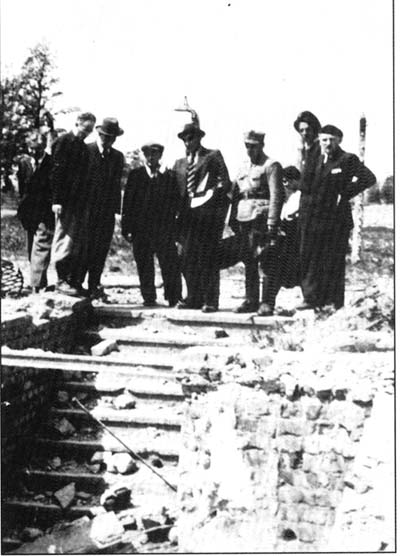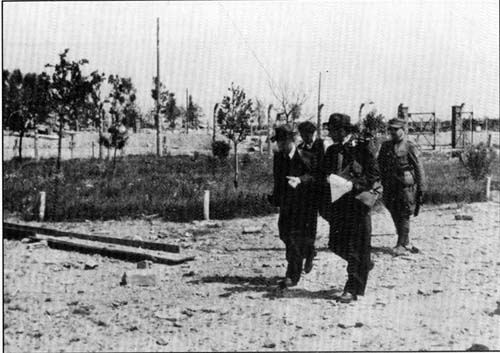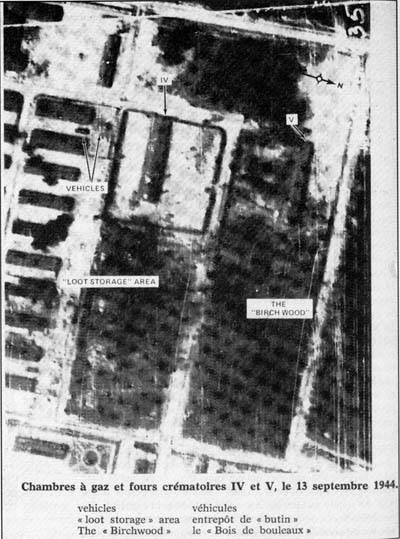that less victims were gassed at one time. thus less gas chamber space was required. The old formula of 2,000 at a time had gone and out of fashion and the maximum size of a batch became 1,000. In the author’s opinion, there could be only two possible explanations for such a modification: either the number of people to be gassed turned out to be smaller than anticipated, or the assign of large batches meant prolonged overloading of the cremation furnaces and led to frequent breakdowns, this reducing the overall efficiency of the Krematorium. By limiting the capacity of Leichenkeller 1 to 1,000 people, the SS optimized their incineration installation of regulating it to avoid the problems brought about by “accelerated” working. The author considers that this new method, based on experience, made it possible to improve the incineration throughput of the Krematorium. The same principle was applied in May 1944 in Krematorium V, where an internal wall was built to create a gas chamber of about 12 m² in order to be able to “treat” small groups using a minimum of Zyklon B. It is not known whether Leichenkeller 1 of Krematorium III was divided in a similar way, but this would seem logical. At the present time, one of the few opportunities that exist for verifying this would be to study ALL of David Olère’s sketches, assuming that somewhere he had drawn from memory the interior of the gas chamber of Krematorium III. However, this research is not possible at the moment, because fifty of Olère’s sketches (about half of his historical production) are not available to the public.
[On 19th December 1943, most probably, Huta gave the new head of the Bauleitung, SS Lieutenant Jothann, virtually all their original drawings for Krematorien II and III, in order to finalize business concerning these two buildings. This letter, actually dated 1944 and cited as such in the annexes, is much more likely, in the logical succession of the correspondence exchanged, to date from 1943, its writer having somewhat anticipated the arrival of the new year. Chronologically, the date of 19th December 1943 is more plausible than 19th December 1944. In this case, the author’s comments on this letter in the annexes are mistaken, because they are too “dramatized”. They are nevertheless left uncorrected because it is impossible to actually prove that the letter was written in 1943 as there is no supporting documentary evidence.]
From the end of 1943 until April 1944, Krematorien II and III functioned regularly, but not at full capacity, in accordance with the numbers of people found unfit for work. Krematorien IV and V, were out of service and not required anyway. In anticipation of the arrival of the Hungarian Jews, the SS Krematorium Administration had the FOUR buildings gradually made ready for service. On 13th April, the DAW metalworking shop received an order (no. 1483) for the repair of 20 furnace doors and 10 scrapers for Krematorien I [II] and II [III]. This work was completed on 17TH JULY 1944 [a date that remains inexplicable because impossible to check in the original file]. On 5th May, still for Krematorien II and III, the metalworking shop completed 40 nuts and bolts produced according to a sketch attached to an order of 27th April (no. 1513). Finally, on 1st June, this shop received an order (no. 1600) for the repair of 30 furnace doors for Krematorien III [IV] and IV [V] and for 4 slices. This order, marked urgent, was completed on 7th June [this order from the SS administration raises the question of its late date with respect to the “resettlement” of the Hungarian Jews and the number of doors is a mystery, as it seems excessive and is not a multiple of 8. We have no documents to elucidate |
|
Document 73
[PMO neg. no. 21334/49] |
 |
|
| Western access stairway to the undressing room (Leichenkeller 2) of Krematorium II in 1945. In the center, standing on the top step, is the Examining Judge, Jan Sehn. In the background is the barbed wire fence. On the left is a post supporting three strands of barbed wire to prevent any “leakage” away towards the southern grounds of the Krematorium. There is no ring of greenery here. |
|
 |
Document 74
[PMO neg. no. 21334/48] |
|
| In the center, his tie flying in the wind, is the Examining Judge, Jan Sehn, accompanied by various officials, walking in 1945 between the “formal garden” (behind them) and the undressing room (Leichenkeller 2) in the north yard of Krematorium II, heading for the western access stairway. Jan Sehn was following exactly the same route as those found unfit for work, from the entrance gate (in the background on the right) to the stairs down to the undressing room. In the middle ground is the famous garden which according to the “revisionists” should not have been intact if the SS had really gassed people, as it would have been trampled out of existence by the crowds to be “treated”. It is nevertheless protected by pickets carrying a very low strand of barbed wire, an apparently laughable barrier, but in fact vicious and effective. |
|
|
Document 75
[Le Monde Juif, No. 97, page 14] |
 |
|

